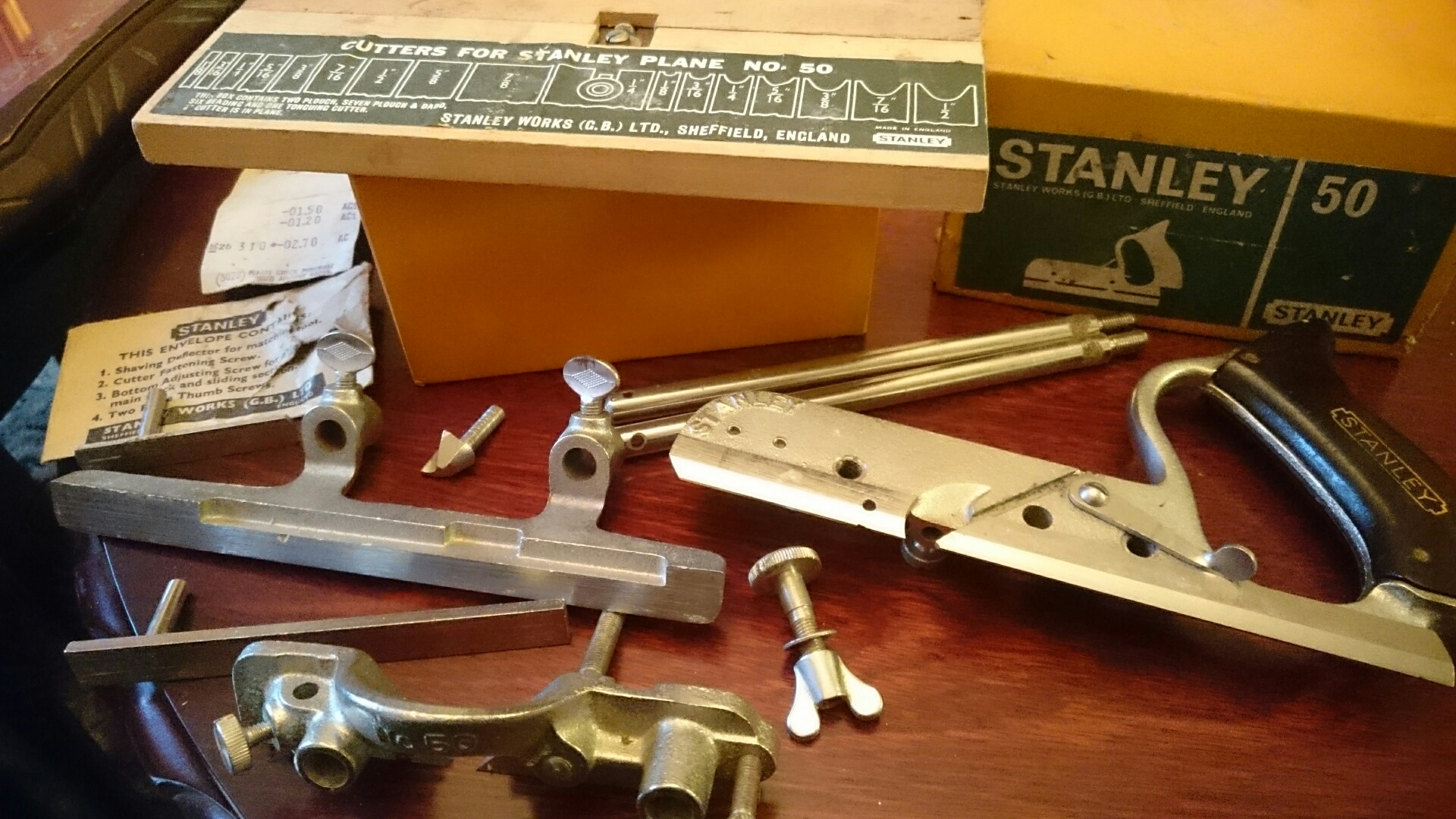NickN
Established Member
Got offered this yesterday at my local woodturning club for £15, seemed like an interesting thing even if it was all just a messed up heap in the cardboard box, but I spent a bit of time today sorting through, digging all the cutters out and seeing what was there or not.

Looks to me as if by some miracle there may not actually be anything missing, going by a diagram I found in Google Images, but there are no instructions and I've never used or owned one of these before so not 100% sure. Anyone here care to comment on whether this is actually a useful plane, and if so what is it best at, and what is to be avoided? Or in other words, is it a heavyweight and essential (well, ok, useful then) tool in the woodworker's cupboard, or is not much more than a pretty paperweight, and others do a better job?
I'm afraid I may have started falling down some very slippery slope... as even if consensus is that it's not a particularly good user tool I will probably keep it for the, *cough*, collection... (y'know, the collection that started out being just one or two bailey-style planes and an old saw) (hammer)

Looks to me as if by some miracle there may not actually be anything missing, going by a diagram I found in Google Images, but there are no instructions and I've never used or owned one of these before so not 100% sure. Anyone here care to comment on whether this is actually a useful plane, and if so what is it best at, and what is to be avoided? Or in other words, is it a heavyweight and essential (well, ok, useful then) tool in the woodworker's cupboard, or is not much more than a pretty paperweight, and others do a better job?
I'm afraid I may have started falling down some very slippery slope... as even if consensus is that it's not a particularly good user tool I will probably keep it for the, *cough*, collection... (y'know, the collection that started out being just one or two bailey-style planes and an old saw) (hammer)
































